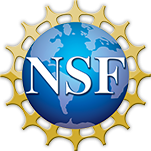Abstract
Chemolithoautotrophic Epsilonproteobacteria are ubiquitous in sulfidic, oxygen-poor habitats, including hydrothermal vents, marine oxygen minimum zones, marine sediments and sulfidic caves and have a significant role in cycling carbon, hydrogen, nitrogen and sulfur in these environments. The isolation of diverse strains of Epsilonproteobacteria and the sequencing of their genomes have revealed that this group has the metabolic potential to occupy a wide range of niches, particularly at dynamic deep-sea hydrothermal vents. We expand on this body of work by examining the population genomics of six strains of Lebetimonas, a vent-endemic, thermophilic, hydrogen-oxidizing Epsilonproteobacterium, from a single seamount in the Mariana Arc. Using Lebetimonas as a model for anaerobic, moderately thermophilic organisms in the warm, anoxic subseafloor environment, we show that genomic content is highly conserved and that recombination is limited between closely related strains. The Lebetimonas genomes are shaped by mobile genetic elements and gene loss as well as the acquisition of novel functional genes by horizontal gene transfer, which provide the potential for adaptation and microbial speciation in the deep sea. In addition, these Lebetimonas genomes contain two operons of nitrogenase genes with different evolutionary origins. Lebetimonas expressed nifH during growth with nitrogen gas as the sole nitrogen source, thus providing the first evidence of nitrogen fixation in any Epsilonproteobacteria from deep-sea hydrothermal vents. In this study, we provide a comparative overview of the genomic potential within the Nautiliaceae as well as among more distantly related hydrothermal vent Epsilonproteobacteria to broaden our understanding of microbial adaptation and diversity in the deep sea.

